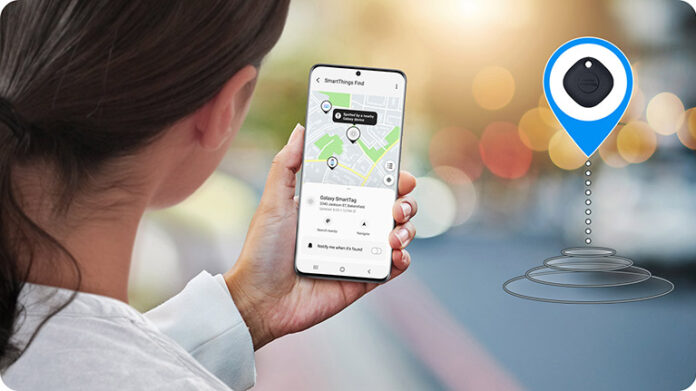Fast Company VP Jaeyeon Jung on the Galaxy SmartTag
What are the key features of the Samsung Fastcompany Jaeyeon Galaxy Smarttag Smartthings?
If you’re looking for a Bluetooth tracker to keep your keys and other items safely tucked away in a bag or pocket, the Samsung Galaxy SmartTag is an excellent choice. It’s easy to set up, requiring only the SmartThings app to link up with your smartphone.
It uses Bluetooth Low Energy (LE) to connect up to your phone, and once it’s linked, the tracker will show up in the SmartThings Find section of the app. This gives you the ability to view its last recorded location, and also search nearby if you need to find your lost item quickly.
You can even attach it to your keychain if you’d like, or stick it to your dog’s collar or other wearables. The device’s CR2032 battery should last for around a year before it needs replacing, and it’s IP53 rated so it should be fine to be splashed with water.
The Galaxy SmartTag is available in two versions, the standard one and the more advanced, and larger, Galaxy SmartTag Plus. Both are square-shaped, with rounded edges and weigh about half an ounce.
In terms of size, both the regular and the Plus are larger than Apple’s AirTag or Tile’s Mate, but they still fit well in your hand. The Plus is slightly thicker and heavier than the AirTag, too, at 1.6 x 1.6 x 0.4 inches.
For starters, the Galaxy SmartTag and its Plus counterpart support UWB-based position tracking, which should give them an edge over rival trackers like the Apple AirTag and Tile Mate in terms of accuracy. That said, the tag’s location capabilities will be limited by the density of Samsung phones in your area.
It should also be noted that the SmartTag is only compatible with Samsung smartphones, meaning if you switch to another Android or iPhone in the future, you’ll need a new Samsung smartphone to be able to use it. That’s a small price to pay for the convenience of Bluetooth location tracking out in the wild, though.
The SmartTag’s setup is a relatively quick and simple process, although the Nearby Device Scanning option did slow things down during my review. Fortunately, there are a couple of settings you can turn off to speed up the process: Flight Mode and Unknown Tag Search.
Also Read: Mike bloombergfunded joe mayschleifervox
How do you design a product like the SmartTag?
The Galaxy SmartTag, as you might expect from a company with the ilk of Samsung, is not a slouch when it comes to the latest in smarthphone tech and gizmos. The aforementioned device is accompanied by a plethora of high-speed wireless devices, ranging from Bluetooth to WiFi and everything in between. For the lucky few in the know, Samsung has a nifty little app called Samsung Smart Wallet that allows you to make the most of your mobile money with one touch of a key fob.
How do you build a product like the SmartTag?
The Galaxy SmartTag is Samsung’s take on a Bluetooth tag that can be used for more than just locating your lost smartphone. The device attaches to a compatible item and uses Bluetooth low energy to transmit its location to a nearby Samsung smartphone, which can then relay the information discreetly to you. The Galaxy SmartTag’s battery lasts for up to a year, and its range is impressive. The tag has an LED display that can be a handy visual cue when trying to locate it. Its gimmick is that it sends a little Bluetooth signal to your phone even if the handset is in another room, which can help when coordinating with other SmartThings devices.
You can use the [MM_Product_Data] SmartTag to list a wide variety of product-related data such as name, billing description, price, and information about a trial period. The most important thing is that the data is dynamically updated based on your products’ settings so that it’s always the best way to tell your customers about your newest offerings.
What are the challenges in building a product like the SmartTag?
In building a product like the SmartTag, there are many challenges that can occur. For one, the device needs to be easy to use and provide value for its users. For instance, it must be able to perform simple smart home tasks, such as turning on lights in your home with just a button press. It also needs to be able to identify itself and its owner.
A common technology used for this purpose is barcodes, which are typically attached to products. They encode information about an object’s identity, as well as its sensor state, and they are read by optical readers such as scanners or camera phones.
However, the challenge in developing a product like the SmartTag is that it has to be able to differentiate itself from other objects. This requires a unique identifier, which is not always easy to come by in the market. Moreover, the device must be able to capture when it changes its state so that the reader can decode it.
In addition to this, it has to be able to make sense of the data that is being collected about its sensors and environmental conditions. This is a difficult task as it requires both a semantic model and a set of data standards. To help solve this, we have developed a framework for modelling SmartTags. The framework comprises a collection of contextual codes, semantic data models and data standards. These are compiled from relevant state of the art, and represent a starting point for the development of a semantic model for the SmartTag.



















